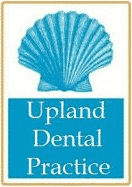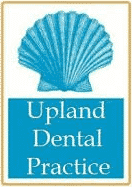Dental restorations are essential for maintaining oral health and fixing damaged teeth. Of the various options available, inlays and onlays are two effective restorations for teeth that are too damaged for fillings but not too damaged for crowns.
What differentiates inlays from onlays? In this article, we will enlighten you about these two dental restoration options, including their cost, the procedure, the materials used, and cost considerations.
Inlays and Onlays Explained
Inlays and onlays are custom dental restorations. They are bonded to the injured tooth to restore teeth that are too damaged for fillings but not too damaged for crowns.
How do these two differ?
Inlays are placed on the teeth cusps, the raised points of the tooth. They fix decay or damage to the core of the tooth. Usually, it is needed when the tooth’s cavity has become too deep and too big. Inlays work best for moderate decay or damage within the tooth cusps. Although they don’t need complete coverage like crowns, they are an improvement over fillings. It is usually fabricated using either gold, porcelain, or composite resin as its material.

Onlays, on the other hand, restore damage affecting one or more cusps or damage that reaches the chewing surface. It works best for more significant damage and is used to fix a larger part of the tooth. This means that onlays give more extensive coverage than inlays. Although the materials used for onlays are typically the same as inlays, they cost more because they require more preparation and material, given the wider coverage they provide.
Inlays and onlays offer a good balance between crowns and fillings that involves a long-lasting tooth restoration. A study conducted revealed that inlays had a mean survival rate of 90.89% while onlays had 93.50%. A combined group of inlays and onlays showed a survival rate of 99.43%. This indicates that the 5-year survival rate for inlays and onlays is very high, exceeding 90%.
A dentist in Upland California may give guidance on the best course of action based on your specific needs. The choice between inlays and onlays depends on the extent and location of the tooth damage, cost considerations, and personal preference.
Materials Used for Inlays and Onlays
Inlays and onlays are made from various materials, each to suit a specific concern. Porcelain, composite resin, and gold are the most often used materials for inlays and onlays.
Porcelain can match the color of your natural teeth, making it an excellent choice if you prioritize aesthetics. The good thing is, that it does not only provide natural-looking teeth, but it is also highly resistant to wear and staining. However, it may be more expensive compared to composite resin.
Composite resin inlays and onlays are the best choice if you are looking for an affordable and aesthetically pleasing option. Composite resin is tooth-colored and can closely match the patient’s natural tooth color. However, it may wear down over time and can be prone to staining. You may need to visit the dentist more to get it fixed.
Gold inlays and onlays are ideal if you are looking for a long-term fix. It offers a lasting restoration, particularly for molars where the strength of the material is more important than its appearance. Though gold is less popular among patients because of its metallic appearance and its high cost, it’s proven durable and safe.
Whether you choose gold, porcelain, or composite resin, each material has unique advantages that can be well suited for your needs. Consulting your dentist will guarantee that you select the best solution for your cosmetic and oral health objectives.
How Are Inlays and Onlays Done
Here is a step-by-step guide that will help you figure out what to expect from the procedure.
A visit with your dentist is the first step. Your dentist will examine your teeth and decide whether an inlay or an onlay is the best course of action.
After discussing with you the most suited procedure, your dentist will remove any decayed or damaged areas of the tooth. To minimize discomfort during the procedure, anesthesia is usually applied. An impression of the prepared tooth is made and then sent to a lab for crafting. While waiting for the permanent restoration, a temporary inlay or onlay is placed to protect the tooth.
Customizing inlay or onlay normally takes a week or two. After they’re made, you will return to the clinic to remove the temporary repair. The permanent one is fitted to the tooth with dental cement. Necessary adjustments may be done, to ensure comfort and bite alignment.
During the procedure, you might experience discomfort or sensitivity. Do not worry, this is usually minimal and will subside after a day or two. Anesthesia will also help in managing the pain.
You may also consider the following to ensure the success of the procedure.
- Avoid hard or sticky foods that might knock or pull the temporary restoration.
- After the permanent one is fitted maintain good oral hygiene by brushing or flossing daily.
- Follow your dentist’s advice and visit for regular checkups.
Cost and Insurance Coverage for Inlays and Onlays
Considering inlays or onlays? Knowing the costs and insurance coverage beforehand can ease your mind. Here’s what you need to know!
The type of material significantly influences the cost.
- Composite resin can range from $250 to $1500 per tooth.
- Porcelain can cost $500 to $2,000 per tooth
- Gold: typically costs around $600 to $2,500 per tooth
This can still vary depending on the location. Urban areas with higher cost of living have higher dental fees. The size and complexity of the inlays or onlays will also affect the cost. More damage means a higher cost.
Since dental insurance plans categorize inlays and onlays as major restorative procedures, there are many insurance options available. The coverage for inlays and onlays can vary widely based on the plan and provider.
There are:
- Basic coverage plans that may cover 50% to 70% of the cost.
- Premium plans that may cover up to 80% of the cost.
Some insurance plans require pre-authorization for inlays and onlays. You must also be aware of your plan’s annual maximum payout.
Bear in mind that you must pay the remaining balance, depending on the entire cost and coverage percentage. Always verify with your insurance provider to find out what is covered and what your out-of-pocket costs will be.
To help you control costs, ask your dentist about payment plans or financing options. You can get quotations from various dental practices to compare pricing.
No insurance? Our Patients Don’t Need It!
Inlays and Onlays in Upland CA
Inlays and onlays have several advantages over traditional fillings. Their durable materials allow them to last longer than ordinary fillings, which is why they have become known for their longevity. Whether composite resin or porcelain, they can provide you with natural-looking teeth. They also help maintain oral health by preserving a larger portion of the healthy tooth structure.
Are you planning to get dental restorations? Book a free consultation with Upland Dental Practice to discuss your options and find the best solution for your dental needs.
Need to Talk to a Dentist?


